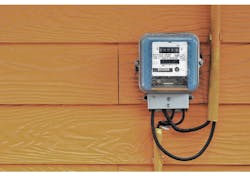Why Did Europe Choose Narrowband for Long-Range Smart Gas Meters?
This file type includes high resolution graphics and schematics when applicable.
France and Italy are the first two European countries to decide to replace all mechanical gas meters with modern, smart gas meters. Key reasons to migrate to a smart-gas-meter network include:
- Reduces cost of billing with automatic reading, which means no manual labor to get consumption data from the actual meter to the utility back-end system
- Creates consumer awareness on their energy usage and allows them to better control and potentially reduce energy usage
- Provides better tools for leakage detection; non-technical loss (theft)
When France and Italy decided to replace all gas meters with narrowband long-range gas meters, a very thorough pre-study and pilot project was conducted. The goal was to find, test, and select the best solution for long-range metering applications. The key factors for making a technology selection is system cost, performance (robustness and reliability), scalability, and long-term availability (standards-based vs. proprietary solutions).
The Wireless M-Bus N-mode specification was chosen as the best solution to meet the tough requirements of gas meters for cost, scalability, and robustness, in addition to being a future-proofed solution. Wireless M-Bus N-mode uses standard narrowband technology at 169 MHz and can be supported by most major vendors for integrated ISM band RF devices, including Texas Instruments with its sub-1-GHz CC1120 performance line family of RF transceivers.
The required lifetime of gas meters in these deployments is up to 20 years. The system, therefore, needs to be future-proof with a very high probability that the communication will continue to work well down the road. One can easily imagine an environment with billions of new wireless Internet of Things (IoT) devices in the coming decades. Therefore, it’s critical to choose a solution with strong coexistence capabilities – narrowband is a natural selection in that respect.
Going back to the Wireless M-Bus N-mode specification, the technology selection was made by doing substantial trial deployments in real environments, using different RF communication technologies. Several different technologies were tested, including competing long-range solutions based on wideband and spreading.
For this application, it was proven in the field that narrowband sub-1-GHz technology provided the lowest number of concentrators (i.e. longest range in a real deployment) and the best reliability (protection against other RF sources, both from other meters in the system and other hostile RF sources). The study concluded that narrowband is the de facto standard for long-range communication, as it is known for its high communication capacity to support a very large number of nodes in a limited RF spectrum.
A key factor for long-term availability of a solution is that the technology is supported by multiple vendors. History has shown that economy of scale can only be achieved by using standards-based solutions, which is exemplified by the major deployments in France and Italy. The majority of the deployment in France was split between three main system suppliers. These suppliers have individually selected hardware platforms from different silicon vendors, with the TI CC1120 RF transceiver taking the lion’s share.
Smart flow meters (water, gas, or heat) represent one of the largest markets for long-range RF connectivity today. Millions of smart flow meters are already deployed worldwide, many using narrowband for range, robustness, and scalability. The decision in France and Italy to use narrowband Wireless M-Bus N-mode for their major deployments can therefore be seen as a natural decision, also backed up by real-world test deployments. With TI narrowband and the CC1120 platform, developers can achieve more than 100-km range, setting the standard for long-range narrowband communication.
Stay tuned for the next blog is this series, where we will discuss long-range narrowband communications for the smoke-detector market.
About the Author
Terje Lassen
Systems Engineer
Terje Lassen is a systems engineer and works in strategic marketing for the low-power RF product line inside Texas Instruments, focusing on sub-1-GHz technology and connected solutions for IoT applications. He has worked for TI since it acquired Chipcon in 2006. Prior to the acquisition, Lassen joined Chipcon in 2002. He has a Master’s of Science in microelectronics from the Norwegian University of Science.
Svein Vetti
Systems Engineer
Svein Vetti is a systems engineer and works in strategic marketing for the low-power RF product line inside Texas Instruments, focusing on sub-1-GHz technology. He has worked for TI since it acquired Chipcon in 2006. Prior to the acquisition, Vetti was a sales manager and design engineer at Chipcon since 1997. He has a Master’s degree in electrical engineering from the Norwegian University of Science and Technology and a BSEE from the University of California, Santa Barbara.




